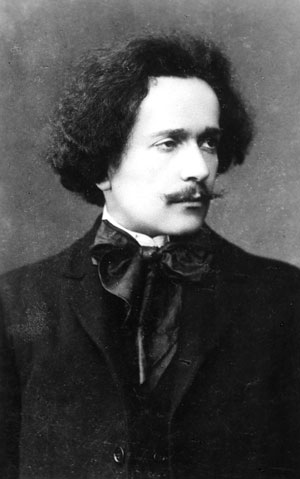(Florence, 1875 – there, 1933), writer, after graduating in literature, moved to Scotland, Glasgow, as a reader of Italian and there founded the “Dante Alighieri” committee, the first to have arisen in Britain. Returning to Florence in 1910, he collaborated on “La Voce” and “Lacerba” with heated interventionist articles and composed the hymn “Trento and Trieste,” which soon became the battle song of Italian soldiers. He later joined the Fasci rivoluzionari d’azione interventistica along with Settimelli, Marinetti, Gonnelli, Lega, Carli, and Rosai. He is also close to Papini, Soffici, Palzzeschi and Tommei with whom he meets at “Le Giubbe Rosse” café. After World War I, in which he participated as a volunteer, he resumed his literary activity and contributed to many newspapers including “L’Impero,” “Solaria,” “Il Bargello,” “Il Selvaggio,” and “L’Universale.” With Primo Conti, he is part of the editorial staff of the magazine “The Encyclopedia.” His name as a writer remains linked to two works “From the Garden to the Isonzo,” which came out in 1917 and was republished by his son Braccio in 1937, and “The Bordone of Poetry,” which was given to print in 1930.
The Fernando Agnoletti Fund consists of two documentary nuclei, separate and distinct because they came to the Foundation Archives at different times, the first donated in 1984, the second in 2001. The computerized cataloguing work that unified the papers into a single corpus has recently been completed. Of course, appropriate indication of the original core to which it belongs is given in the individual sheet.
The Fund is divided into the following sections: Correspondence, which collects letters sent to Agnoletti from prominent correspondents such as Rosai, Negri, Duse, Sarfatti, Ricci, Soffici, Stuparich, and Aleramo, and a core of letters of a private nature from Agnoletti and others sent to family and friends; Manuscripts, divided into manuscripts by Agnoletti, mainly drafts of articles and essays, and manuscripts by others, including Sibilla Aleramo’s poem “Un Maggio” dated 1920; Photo library, which contains some portraits of Agnoletti at different stages of life; Miscellaneous, which collects some press clippings and thirteen original Futurist posters, suitably restored; Periodicals, a collection of newspapers from the 1920s including “The Latin Redemption,” published during Agnoletti’s stay in Glasgow; Library, which includes Agnoletti’s two works, “From the Garden to the Isonzo” (in the 1917 edition and the 1937 reprint edited by B.Agnoletti) and “The Bordon of Poetry” (1930), A.Negri’s collection of poems, “The Book of Mara,” (1919), with dedication and A.Vergelli, Castle in the air. Unpublished Agnoletti-Pascoli correspondence, 198







